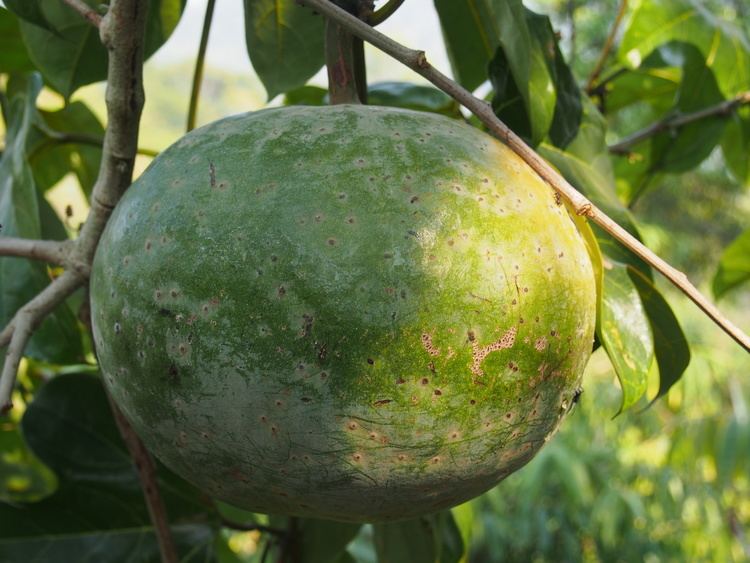Subtribe HodgsoniinaeC.Jeffrey Higher classification Cucurbits | Tribe Trichosantheae Scientific name Hodgsonia Rank Genus | |
 | ||
Similar Cucurbits, Schizopepon, Polyclathra, Schizocarpum | ||
Hodgsonia is a small genus of fruit-bearing vines in the family Cucurbitaceae.
Contents
Hodgsonia was named for Brian Houghton Hodgson in 1853 by British botanists Joseph Dalton Hooker and Thomas Thomson, who examined the plant under Hodgson's hospitality in the Himalaya.

Classification
Physical characteristics
Food

Although the flesh of Hodgsonia fruit is inedible and considered worthless, the large, oil-rich seeds are an important source of food. The kernels are occasionally eaten raw; they are slightly bitter, possibly due to an unidentified alkaloid or glucoside, but "perfectly safe" to eat. More commonly, the seeds are roasted, after which they taste like pork scraps or lard; many mountain peoples consider these roasted seeds a delicacy. In addition to eating the seeds alone, the Naga incorporate them into various types of curry.
Medicine

The medicinal importance of Hodgsonia is mostly in its leaves. In Malaya and java, native physicians report several uses for the nose. The leaves may be dried and burnt, and the smoke inhaled, or the juice of young stems and leaves is squeezed into the nostrils to allay irritation from small insects. The leaves are also boiled and the resulting liquid taken internally, both for nose complaints and to reduce fevers. The ashes from burnt leaves of H. macrocarpa are also used to heal wounds.

In Nagaland, the fruit bulb is applied to bacterial infections in the feet. In Sarawak, Hodgsonia oil is used to anoint the bodies of mothers after childbirth; it also forms the base of embrocations carrying ashes from the leaves of coconut palm and Kaempferia. The oil is also used as a base for medicines in Eastern India.
Vernacular names
Some of these names are ambiguous. "Kepayang" might mean Pangium edule, the "football fruit" tree whose aril is edible but whose large seeds are so laden with hydrocyanic acid that they are used as a powerful arrow poison. (The seeds can be prepared for human consumption; they are boiled and steeped in water, not roasted.) "Kadam" can also mean Anthocephalus cadamba, a tree with much smaller fruit and minute seeds.
